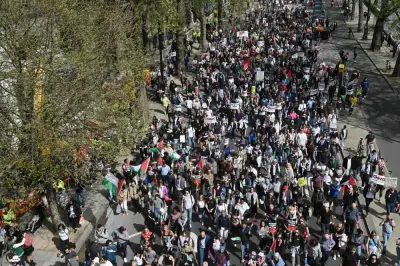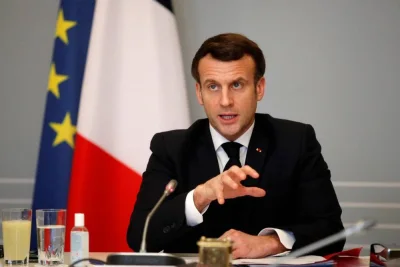A resident leads her cows past a Ukrainian army position near the town of Debaltseve, in the region of Donetsk.
AFP/Kiev
Ukraine has insisted that it would not pull back its troops from the frontline until all sides cease fire under a peace plan aimed at ending five months of bloodshed in the rebel-held east.
Kiev and pro-Russian insurgents are supposed to withdraw their forces and weapons to create a 30km buffer zone in line with a reinforced truce deal agreed in Minsk on Saturday.
The level of violence appeared to have dropped off yesterday after an overnight spurt of heavy gunfire in the separatist stronghold of Donetsk, although Nato’s top military commander said there was a ceasefire “in name only” on the ground.
Ukraine’s National Security and Defence Council spokesman Andriy Lysenko said the first point agreed in the Belarussian capital referring to a mutual ceasefire had to be respected before the rest of the wide-ranging plan could be implemented.
“But the first point has not yet been fulfilled, so we cannot speak about the other points,” he said. “If (Ukrainian forces) are withdrawn, it will be done simultaneously with the Russian troop withdrawal.”
The nine-point Minsk memorandum is meant to reinforce a truce forged on September 5 in a bid to stem fighting that has claimed nearly 3,000 lives since April and threatened Ukraine’s very survival.
The United Nations’ office for humanitarian affairs said the conflict had inflicted €340mn ($440mn) worth of damage in the rebel-held regions of Luhansk and Donetsk, where 1,230 private houses and 659 public buildings were destroyed by the time the Minsk deal was signed.
Nato’s top commander General Philip Breedlove said on Saturday that the continued clashes had shown it was a ceasefire “in name only” and accused Russia of keeping soldiers on Ukrainian soil to bolster the insurgents.
The truce was “still there in name, but what is happening on the ground is quite a different story”, he said on the sidelines of a Nato meeting symbolically convened in the ex-Soviet satellite state of Lithuania.
But he added: “It is our sincere hope and desire that ... the two combatants can come to agreement to again get to a ceasefire situation.”
Lysenko said two soldiers had been killed over the past 24 hours, bringing the death toll since the original truce was declared to 37 servicemen and civilians.
There is no information on casualties from the rebel side.
The Minsk agreement – signed by the warring parties and endorsed by both Moscow’s Kiev ambassador and an OSCE envoy – also requires the withdrawal of all “foreign armed groups” and mercenaries from the conflict zone.
Breedlove insisted that Nato intelligence showed that the Russian troops “are still inside Ukraine”, although Moscow has denied sending in any forces across the border.
Thousands of Russians marched through central Moscow yesterday to protest against the Kremlin’s role in Ukraine, the first major anti-war rally since the conflict began.
“I believe that the war has been provoked by (Russian President Vladimir) Putin,” said wheelchair-bound protester Vladimir Kashitsyn, 44. He added: “I want Putin to stop meddling in Ukraine’s internal affairs.”
The OSCE (Organisation for Security and Co-operation in Europe) said that it has 80 observers in the region to monitor implementation of the agreement.
“De-escalation – including the silencing and withdrawal of weapons and clearing of mines and unexploded ordnance – is a vital first step,” it said in a statement.
The peace pact came together only after all sides agreed to leave the most divisive political issues over the status of the rebel-held areas in Ukraine’s rustbelt for future negotiation.
However, handing a major olive branch to the rebels last week, Kiev offered the eastern regions temporary self-rule and adopted legislation granting amnesty to fighters on both sides.



